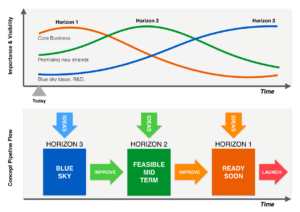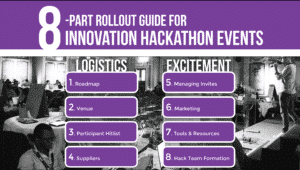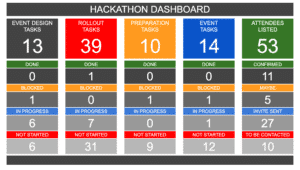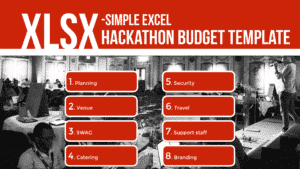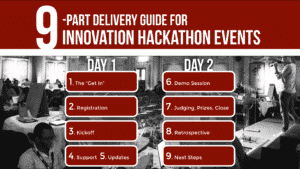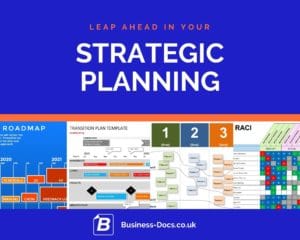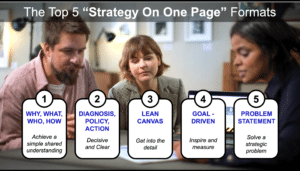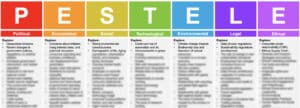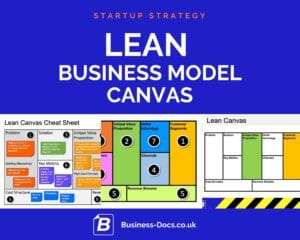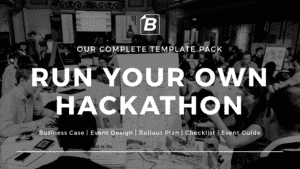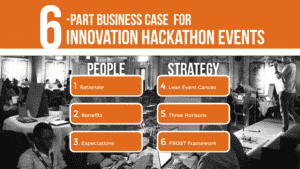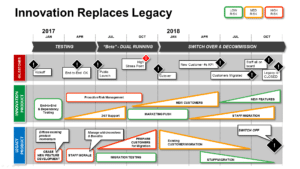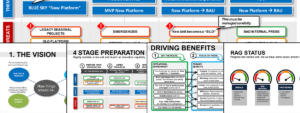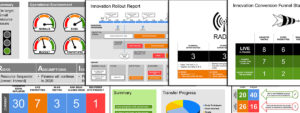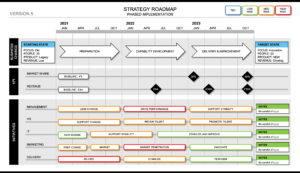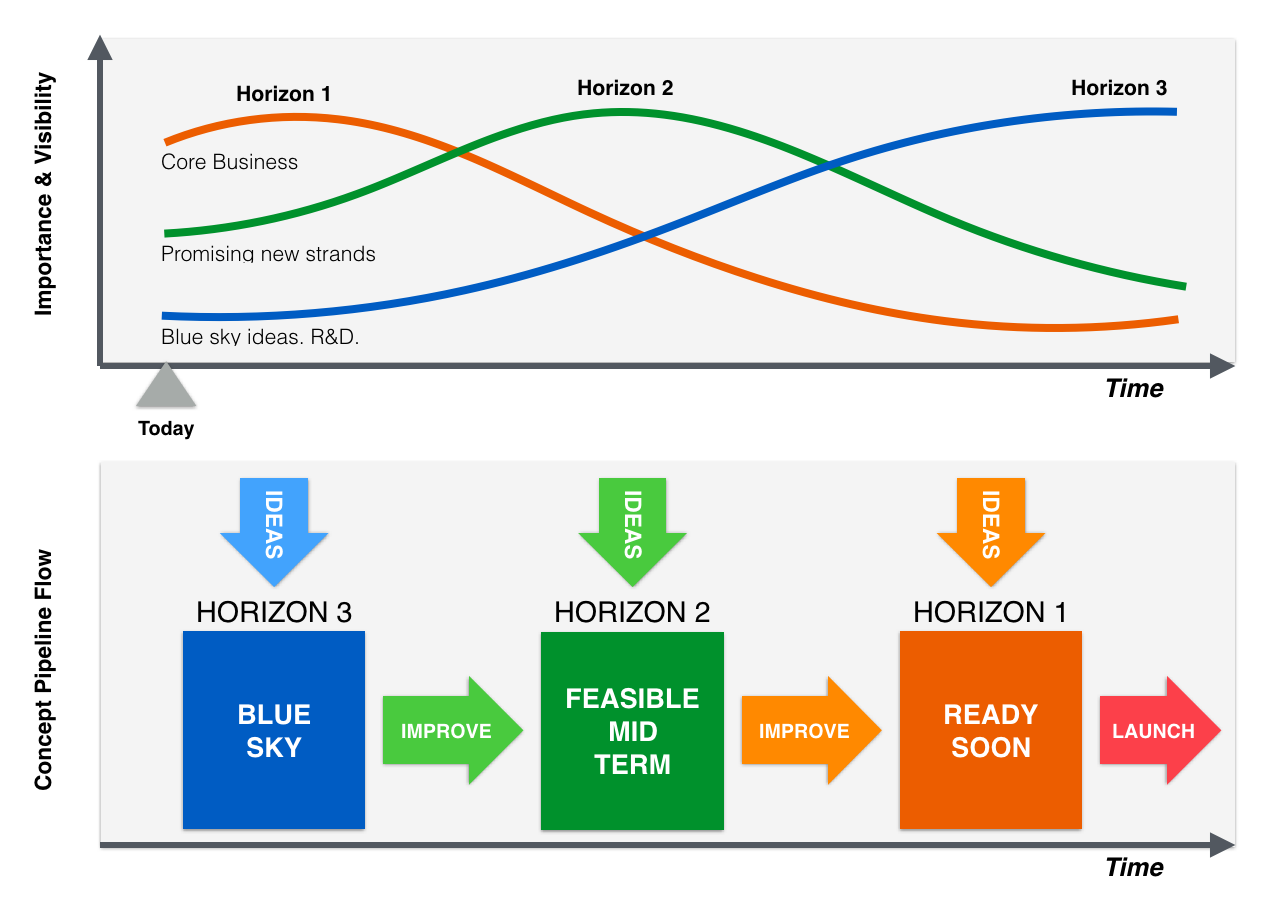
There are a variety of approaches to managing innovation pipelines. Here are some tips, information and templates.
We recommend representing and managing concepts in your pipeline using the Three Horizon model:-
Horizon 1: These are the new projects and concepts that are close to your core business, and that you are close to launching – e.g. in the next few weeks / months.
Horizon 2: These are the projects and concepts that are departures from your normal business that you are launching in the mid-term – e.g. in the next few months / quarters.
Horizon 3: These are the new projects and concepts that are large changes from your core business that require significant new capabilities and are long term innovations – e.g. in 1-3 years.
In your innovation pipeline, you will be bringing new Horizon 1, 2 and 3 ideas into the fold constantly, then testing them, discarding the unfeasible ones, and developing the promising ones as appropriate.
McKinsey created the Three Horizons model to explain how businesses must invest in current products (1st Horizon), incremental innovations (2nd Horizon), and breakthrough innovations (3rd Horizon).
Yes – we have one here and also a more fully featured Three Horizons Innovation Pipeline Template on our companion marketplace Spitmarket.
A good innovation programme invests in regular and open innovation activities (e.g. the FROST Innovation Framework). Sometimes this is managed using an R&D team, and other times all teams spend a percentage of their time on innovation. There are also mixtures of both models.
In all scenarios, there are a stream of new concepts being discussed and prototyped at any one time.
Invest in open innovation with your staff!
A good innovation programme invests in regular and open innovation activities (e.g. the FROST Innovation Framework). Sometimes this is managed using an R&D team, and other times all teams spend a percentage of their time on innovation. There are also mixtures of both models.
In all scenarios, there are a stream of new concepts being discussed and prototyped at any one time.
Track your innovations in three categories – your “Horizons”
- Horizon 1:
- Innovations close to your current business.
- They are close to launching – e.g. in the next few weeks / months.
- Horizon 2:
- Innovations that are departures from your normal business.
- Launching in the mid-term – e.g. in the next few months / quarters.
- Horizon 3:
- Innovations that are large changes from your core business.
- Require significant new capabilities.
- Launching in the long term – e.g. in 1-3 years.
Concepts and Projects move through the Three Horizons.
Promising, feasible projects that start as “Horizon 3” ideas (long term), develop into “Horizon 2” as time progresses.
Concepts that do not test well, or that do not show good results as prototypes, are discarded – i.e. not all ideas will progress from Horizon 3 to 2, and from 2 to 1. In fact, most ideas should not!
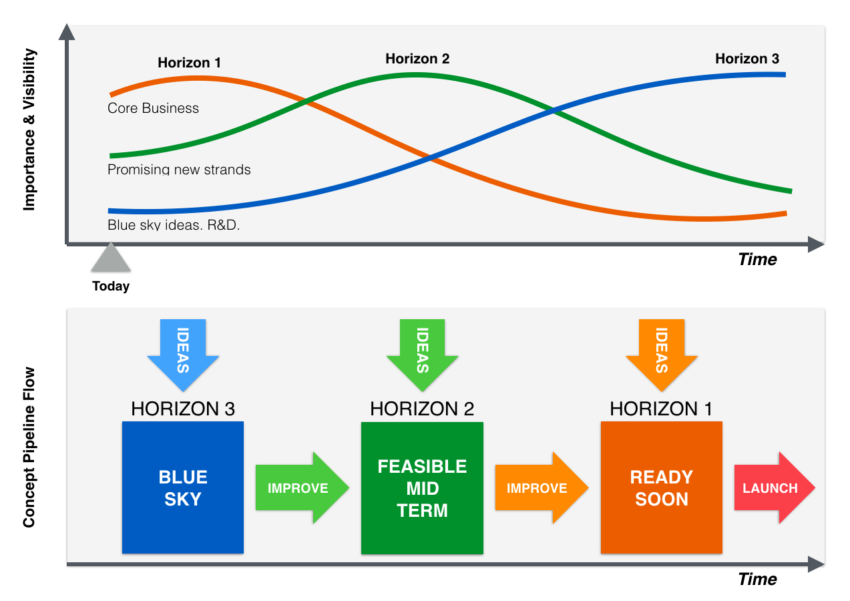
Concepts and Projects start as being less important / visible, and rise in importance
Naturally, projects and concepts that start as “Horizon 3” are intrinsically less visible within an organisation – they are not yet “important”!
Are you short on time?
Use these templates to help with this Best Practice:
Innovation Pipeline Structure: The Three Horizons Template
This Three Horizons Framework Template provides a simple flow for your Innovation Pipeline. Essential for all innovators and business leaders.
See: Innovation Pipeline Structure: The Three Horizons TemplateBusiness Topics that support this Best Practice
Using Hack Events and Hackathons for Innovation
Hackathon Rollout Guide – Getting Ready: Generate Excitement and Avoid Mistakes (PPT & Keynote)
From “green light” through to your event day, this guide helps you roll out your Hackathon. Avoid common issues, and get pointers for a great event.
See: Hackathon Rollout Guide – Getting Ready: Generate Excitement and Avoid Mistakes (PPT & Keynote)Hackathon Task Checklist and Status Dashboard (Excel)
Keep track of your Hackathon Event tasks: This Hackathon Task Checklist is based on years of experience, and makes event rollout simple.
See: Hackathon Task Checklist and Status Dashboard (Excel)Hackathon Budget Sheet Excel Template
Requirements and Costs vary massively between Hackathon events. Use this Excel Hackathon Budget Template to select which line items you need, and then to populate with real figures for your target Venue, Participant count, and aspirational format.
See: Hackathon Budget Sheet Excel Template2 Day Hackathon Event Guide – Simple Step by Step for success, and avoid the common mistakes
This 70 slide PPT tells you how to run an “in person” 2-day Hack Event, and helps you with tips and problems to avoid so that you can maximise your Hackathon Event success.
See: 2 Day Hackathon Event Guide – Simple Step by Step for success, and avoid the common mistakesStrategic Analysis
STEEPLED Analysis PPT – Cheat Sheet Updated for 2024
This STEEPLED Analysis PPT with Cheat Sheet enables you to brainstorm and workshop all aspects of your product or service, in your exact market setting. The cheat sheets enable you to prompt your teams’ thinking in each STEEPLED factor area so that you can maximise your chances of successful market fit.
See: STEEPLED Analysis PPT – Cheat Sheet Updated for 2024Strategic Planning Tools Discount Bundle
These strategic planning tools formats have been refined by our professionals through years of experience, so that you can save time and make your planning, reporting, and communication as impressive as possible, rapidly.
See: Strategic Planning Tools Discount BundleStrategy On One Page – Powerpoint Template
Do you need to present your strategy on one page? Do you need to communicate it 5 minutes? This template includes five one-page strategy formats. It helps you focus the message and deliver your strategy story.
See: Strategy On One Page – Powerpoint TemplateLeadership and Strategic Guidance
PESTELE Analysis PPT Template 2024 – with Ethical Factors
Do you want to conduct a PESTELE analysis for your business or project? Our PESTELE Analysis PPT Template 2024 is an ideal cheat sheet to support PESTELE workshops and product planning, with a special emphasis on Ethical factors.
See: PESTELE Analysis PPT Template 2024 – with Ethical FactorsSTEEPLED Analysis PPT – Cheat Sheet Updated for 2024
This STEEPLED Analysis PPT with Cheat Sheet enables you to brainstorm and workshop all aspects of your product or service, in your exact market setting. The cheat sheets enable you to prompt your teams’ thinking in each STEEPLED factor area so that you can maximise your chances of successful market fit.
See: STEEPLED Analysis PPT – Cheat Sheet Updated for 2024Lean Business Model Canvas PowerPoint with Tips and Guidance
Are you struggling with your Lean Canvas? Use this Lean Business Model Canvas Powerpoint to get help at every stage from professionals.
See: Lean Business Model Canvas PowerPoint with Tips and GuidanceThe Agile Release Planning Template Discount Bundle
Are you looking for a way to create and present your Agile Release Planning? This bundle is the perfect solution. You can use Powerpoint and Excel to create an amazing plan that will help you deliver your product with confidence.
See: The Agile Release Planning Template Discount Bundle
